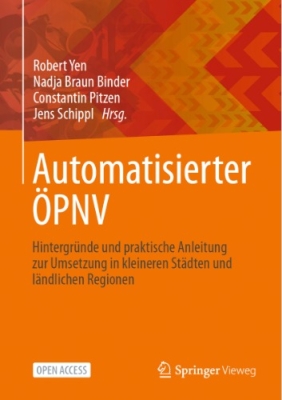In the very near future vehicles will interact with each other and together with the road infrastructure as "Cooperative Intelligent Transport Systems", C-ITS. C-ITS are expected to significantly improve road safety, traffic efficiency and driving comfort and expand the potential for automated vehicles.
Initial situation
It is expected that significant improvements in road safety, traffic flow and traffic management can be achieved through the electronic networking of different vehicles and transport applications by means of cooperative intelligent transport systems (C-ITS). C-ITS expand the potential for automated vehicles and are the basis for future commercial services.
C-ITS deployment is in its infancy. Europe and the USA are leading the global developments, driven by the industry wanting to develop the automotive market by bringing voluntary C-ITS services quickly into the market. Policy makers try to create favourable market and regulatory conditions so that society can start to reap the benefits from the emerging C-ITS services (e.g. warning for dangerous road sections or electronic traffic guidance).
Also in Australia and New Zealand (ANZ), significant C-ITS research work is being undertaken. Moreover, both countries are proactively testing connected and automated vehicles in field trials. Austroads, the peak organisation of Australasian road transport and traffic agencies, is seeking to identify and assess conceptual frameworks for the testing and approval of C-ITS. The framework is intended to ensure that all end-user devices comply with agreed technical standards and are secure, interoperable and suitable for the intended use. Furthermore, an open provider market should be supported and proprietary solutions avoided.
Results
Under the leadership of Rapp, a team of experts, including all stakeholders, produced a recommendation for the conceptual framework for testing C-ITS in Australia and New Zealand. The report contains the main findings of the literature review and expert interviews and describes the possible options: Status Quo, Self-Declaration, Quasi-Regulation and Full Regulation including possible hybrids.
The report provides recommendations for actions on key issues such as organisational structure and the approval process, describes the key steps required to further develop and implement a conceptual framework for C-ITS testing in Australia and New Zealand, and structures these into a high-level project plan.
More than 80 experts from more than 40 organisations were involved in the preparation of the report.
> PDF | Final Report C-ITS Compliance Assessment Framework for Australia and New Zealand
> Website | Webinar C-ITS Compliance Assessment Framework for Australia and New Zealand
Contact us
Robert Yen
robert.yen@rapp-trans.de
+49 173 20 02 609
Jesper Engdahl
jesper.engdahl@rapp.ch
+41 58 595 78 53
Key data
Client: Austroads, Australia
Period: 2017 - 2018
Partner: without partner







